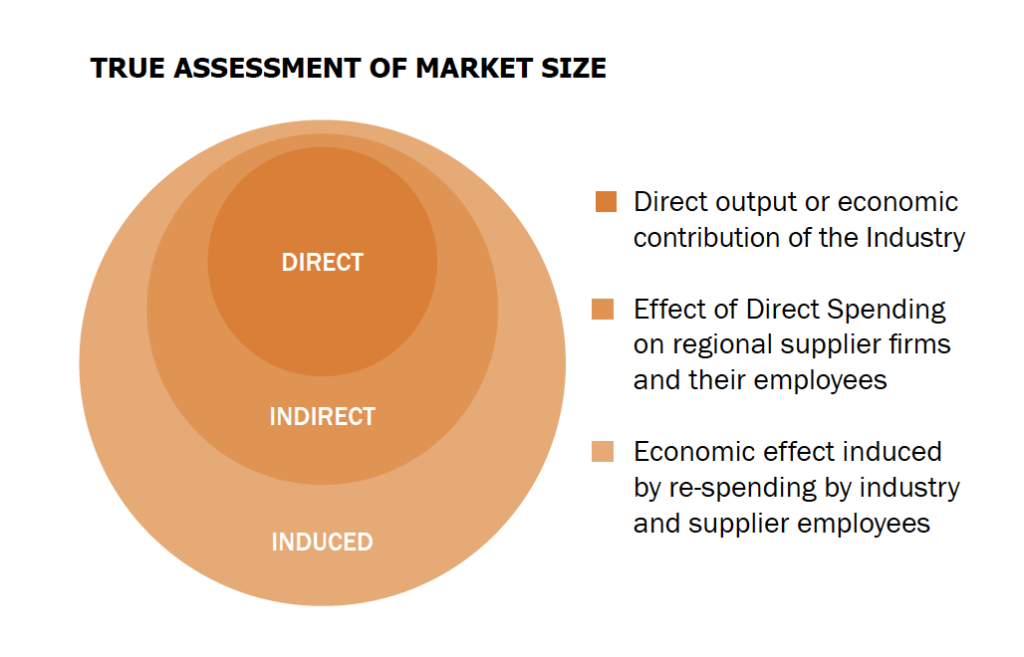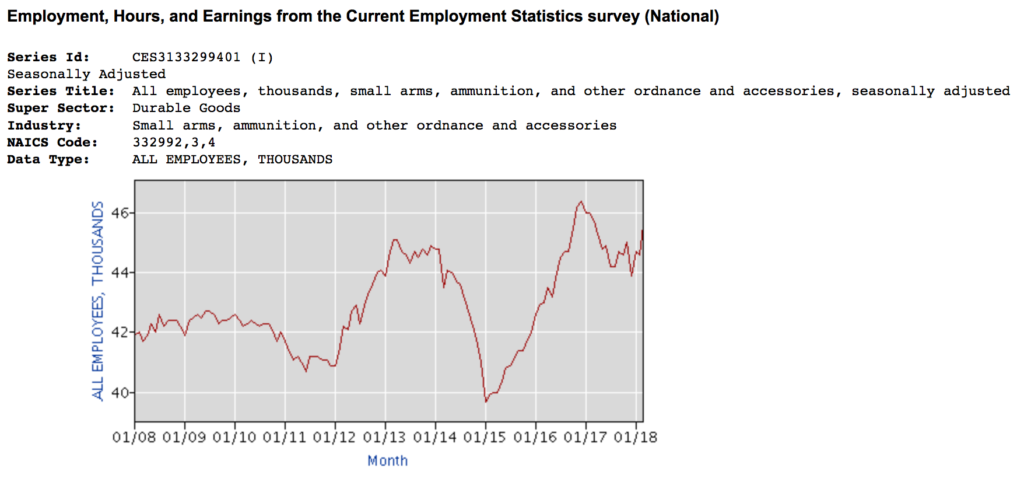@TBPInvictus here:
Conservative commentator S.E. Cupp recently made what I thought was a fairly bold claim on Twitter:
The firearms industry has created 91,000 jobs over the past 5 years. That’s people, not profits. https://t.co/zUMd6wWY0r
— S.E. Cupp (@secupp) May 12, 2018
Aside from getting “ratioed” on the tweet, the vast majority of replies noted that 91,000 is far smaller than the number of those killed by firearms violence over the same period, a fair enough response.
My take was a bit different: The 91,000 seemed unreasonably high to me. I dropped a request for the data in Ms. Cupp’s timeline, which went unanswered. So I set about finding it myself, which I eventually did.
Turns out the source for the claim is a report commissioned by a firearms-related trade association, the National Shooting Sports Foundation (NSSF), and can be found here.
Regardless of economic conditions across the country, our industry has grown and created about 91,000 new, well-paying jobs over the past five years.
Exploring the report, which was produced by consultant John Dunham & Associates, we immediately see that the 91,000 includes jobs that are “direct,” “indirect,” and “induced.” We’re told in a footnote that:
Direct impacts include those jobs in firearms and ammunition manufacturers, as well as companies that manufacture products such as ammunition holders and magazines, cases, decoys, game calls, holsters, hunting equipment, scopes, clay pigeons and targets. Direct impacts also include those resulting from the wholesale distribution and retailing of these products.
So, if you work for a ceramics company that manufactures all manner of items, including clay pigeons, or a leather manufacturer that manufactures a broad variety of leather items, including holsters, or an optics company that in addition to binoculars, glasses, telescopes, microscopes, camera lenses, also manufactures rifle scopes, congratulations, you might be considered an employee of the firearms industry. And, if you’re an employee in some pottery-related company (indirect) who eats at the local diner, the waitress in said diner might also be considered a firearms industry employee (induced) because, hey, you bought your breakfast there (i.e. the “economic effect induced by re-spending by industry and supplier employees”).
This dynamic can be seen in a graphic from the consultant’s brochure – it’s literally a triple threat of multiplier effects:
By this logic, of course, it stands to reason that some number of ambulance drivers, police officers, hostage negotiators, surgeons, physical therapists, psychiatrists, psychologists and, of course, morticians, even the guys who dig the graves, all of whom deal with victims of gunshot wounds, would also be included among firearms industry employees – they are every bit as “indirect” a part of the industry as the clay pigeon manufacturer. To satisfy myself, I took the time to check with the BLS, along with two fairly prominent economist friends. To say that all three consider this “methodology” dubious and were skeptical of its output would be as generous an assessment as I could give.
It will probably not surprise you to learn that government statistics tell a very different story. The government calculates some 46,000 employees in the category of “Small arms, ammunition, and other ordnance and accessories. NAICS Code: 332992,3,4.” That 46,000 is a very far cry from the 311,000 “direct,” “indirect,” and “induced” (currently existing) jobs claimed by the NSSF.
This situation is a classic example of “figures don’t lie, but liars figure.”
Ms. Cupp has some 400,000 followers on Twitter and, for all I know, may have spewed this nonsense on television or radio as well. Let this stand as testament to the fact that it’s wholly untrue.
I’ll note that I’m aware of a request that was made of both the consultant and the NSSF to review the underlying data. That request was denied.
See also:
Please Don’t Use ‘Gun-Industry Job Creation’ to Defend the 2nd Amendment (realclearmarkets)
S.E. Cupp Lambasted After Saying Guns Are Good For Economy: ‘I’ll Take Lives Over Jobs’ (Mediaite)
The gun industry claims to be a big job creator. Here’s why you shouldn’t believe it (LA Times)



